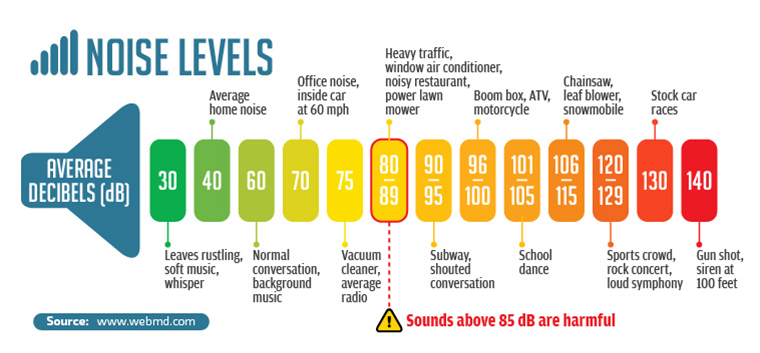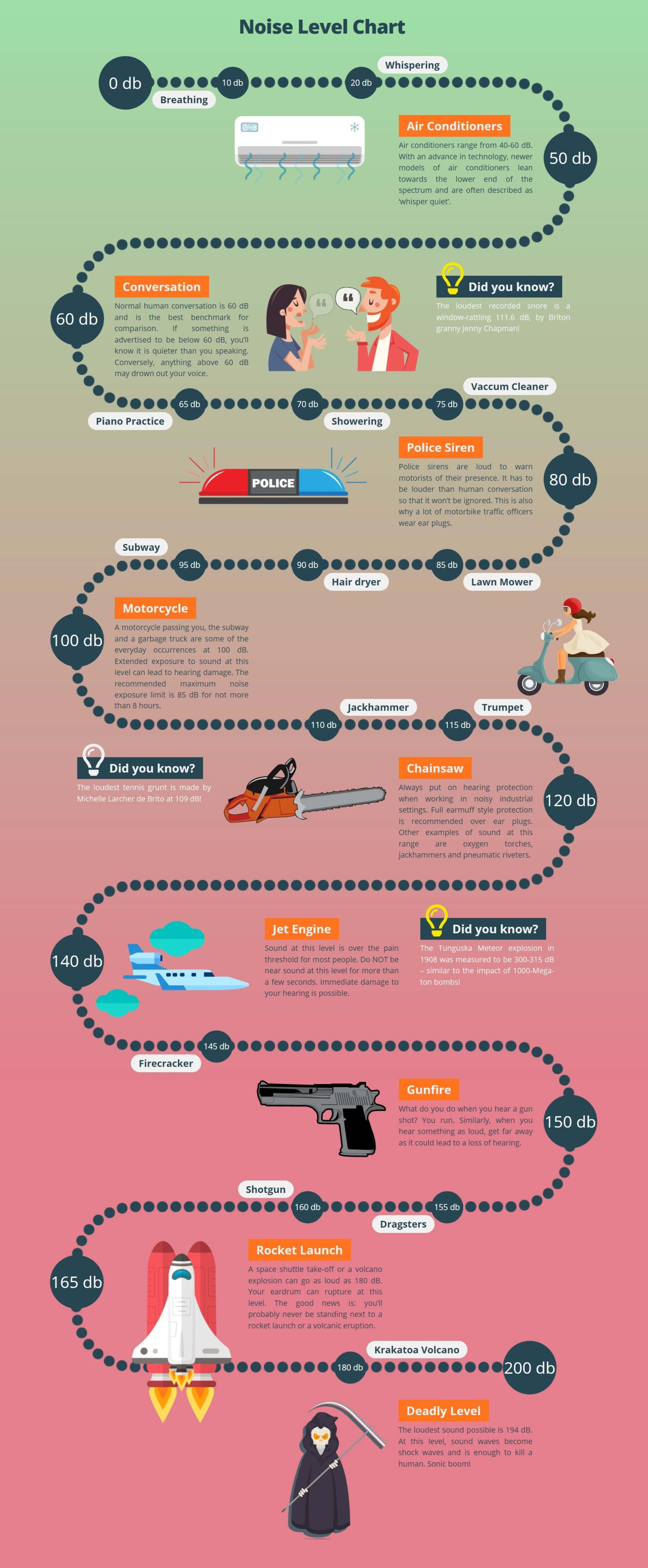


To understand and try to reduce these causes of complaints, among other things I installed sound level meters throughout the room to record noise levels during the day and night, and used acoustic models of the space to assess changes within the room. “I recently worked on a multi-bed intensive care ward where patients and visitors were complaining about the intrusive noise made by the alarms from bedside monitors. In acoustical and audio engineering, decibels are used everywhere because knowing how loud a sound is important whether you’re assessing whether the noise from a new road is going to be a problem or setting the loudness of music in an arena. Graphic: Nick Maroulis Where are decibels used? It doesn’t matter whether that increase is from 40 dB to 50 dB or 70 dB to 80 dB. It makes things easier if a logarithmic scale is used this is what the decibel scale is. In decibel terms, a doubling in loudness corresponds to roughly an increase in 10 dB. The ratio of intensities between silence and ‘ow that hurts my ears’ is about 1:100 million million. But compliance with the Noise Regulations will allow workers' hearing to be protected.The human ear is capable of hearing very quiet (low intensity) sounds and extremely loud (high intensity) sounds. Many thousands of people are exposed to loud noise at work that may be a risk to their hearing. For example, the 2005 Regulations require employers to take action to protect workers at levels of noise 5 dB(A) lower than in the 1989 Regulations and require health surveillance (hearing checks) for workers regularly exposed above 85 dB(A). The 2005 Noise Regulations replaced the 1989 Noise Regulations and introduced new requirements for action to be taken by employers. They do not apply to members of the public exposed to noise from their non-work activities, or when they make an informed choice to go to noisy places or from nuisance noise. Guidance on the 2005 Regulations can be found in the HSE publications Noise at work: A brief guide to controlling the risksĪnd Controlling Noise at Work Background to the Noise Regulationsīoth the 1989 and the 2005 sets of noise regulations are based on European Union Directives requiring similar basic laws throughout the Union on protecting workers from the health risks caused by noise.
DECIBEL LEVELS FULL
The full text of the Control of Noise at Work Regulations 2005 and the full text of the Noise at Work Regulations 1989 can be viewed online. There is also an exposure limit value of 87 dB(A), taking account of any reduction in exposure provided by hearing protection, above which workers must not be exposed. The level at which employers must provide hearing protection and hearing protection zones is 85 dB(A) (daily or weekly average exposure) and the level at which employers must assess the risk to workers' health and provide them with information and training is 80 dB(A). The Control of Noise at Work Regulations 2005 replace the Noise at Work Regulations 1989. The aim of the Noise Regulations is to ensure that workers' hearing is protected from excessive noise at their place of work, which could cause them to lose their hearing and/or to suffer from tinnitus (permanent ringing in the ears). The Control of Noise at Work Regulations 2005 (the Noise Regulations) came into force for all industry sectors in Great Britain on 6 April 2006 (except for the music and entertainment sectors where they came into force on 6 April 2008).

Choose quieter equipment and machinery?.Use the information from my risk assessment?.Overview - How do I protect my workers?.


 0 kommentar(er)
0 kommentar(er)
